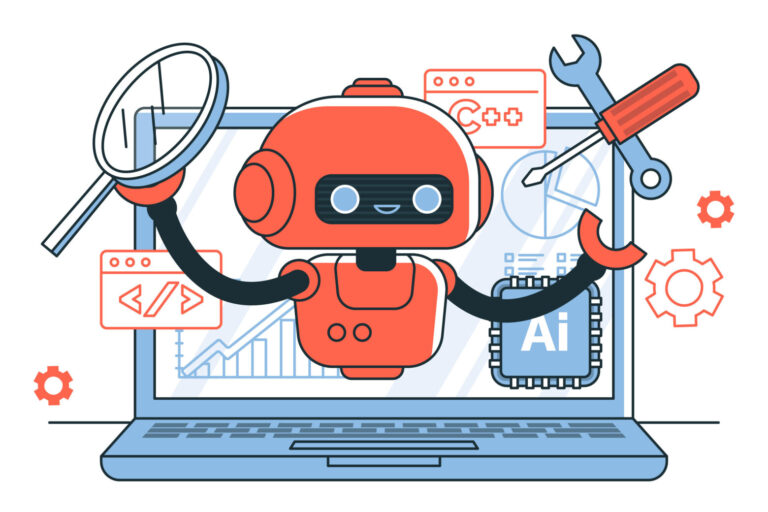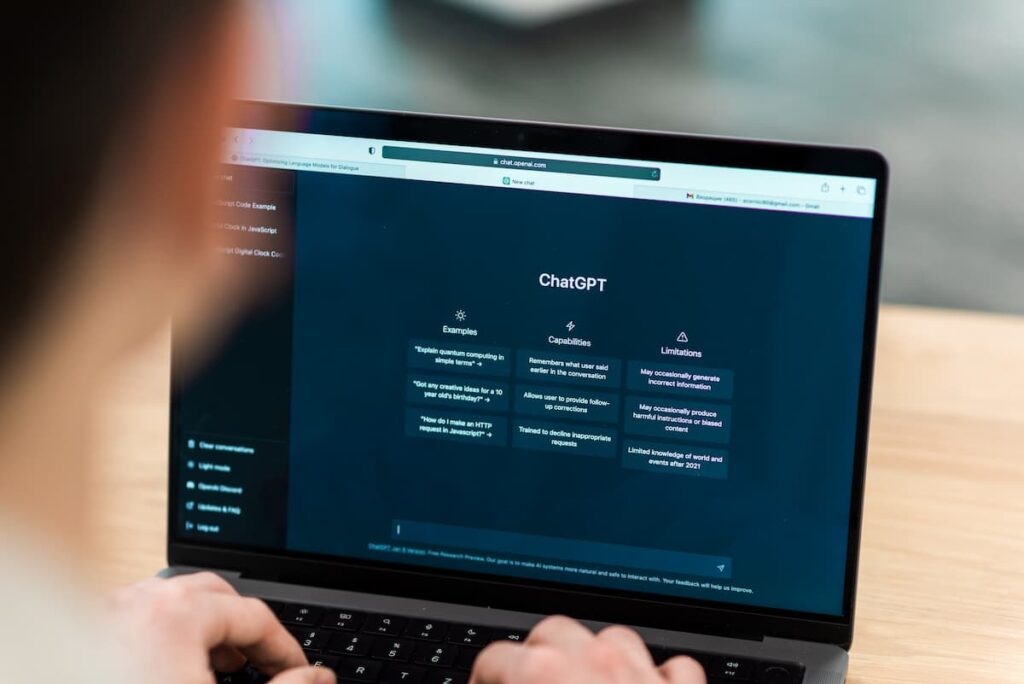Many companies still believe they need in-house data scientists to make meaningful use of AI. That was true a decade ago, but the business environment has changed.
Today, smaller teams can build AI-powered solutions using low-code tools, pre-trained models, and easy-to-integrate APIs without the need for a data science team.
A better first step is to explore the growing ecosystem of AI tools that offer quick wins without the need for large budgets or in-house expertise.
Should you start without a data science team?
While having a full data science team can be valuable, it’s often unnecessary, especially if you’re not building artificial intelligence from the ground up.
Most businesses don’t need to develop custom models to solve their everyday challenges. Nowadays, many AI tools are pre-trained and ready to deploy with minimal setup.
The trick is to focus on use cases that don’t depend on proprietary datasets, heavy customisation, or complex integration. That’s where AI can start delivering real value fast.

Applying AI tools: Five real-world use cases
Off-the-shelf AI tools are designed to solve common, high-impact business problems fast. They offer an accessible starting point for companies exploring AI without the steep costs or ongoing maintenance of custom-built systems.
These tools are especially useful in areas where AI can deliver immediate results with minimal configuration. Here are some of the most popular plug-and-play use cases.
Chatbots for customer support
Customer support is one of the most common entry points for AI adoption, and for good reason. Support teams are overwhelmed with repetitive queries: order updates, password resets, and refund policies.
AI chatbots can take these off their plate, allowing your staff to focus on high-value, complex customer issues.
Modern platforms, like those from Intercom, Zendesk, or built on ChatGPT, make it easy to launch chatbots without starting from scratch. Many come with templates and prebuilt conversation flows, so teams can proceed without deep technical know-how.
This approach is particularly effective in customer-facing sectors like e-commerce, travel, and banking, where fast response times directly impact customer satisfaction.
For example, Lufthansa uses AI-powered support to manage high volumes of traveller inquiries to improve response times while reducing pressure on its employees.
The airline began by using a commercially available chatbot platform to automate responses to frequent customer questions, such as flight status and rebooking options. Over time, the system was tailored to integrate with internal tools like booking and check-in, allowing Lufthansa to scale customer support without increasing headcount or sacrificing quality.
Automation
AI also has an impact on internal operations.
One of the most impactful areas is workflow automation: categorising support tickets, flagging urgent emails, tagging documents, and routing requests to the right team.
While automation once required complex, custom-built systems, modern tools like Microsoft Power Automate, Make.com, and Notion AI make it accessible to non-technical teams.
These platforms come with built-in AI features that help automate routine processes with minimal effort and don’t require coding knowledge.
They’re especially valuable for operations, HR, and IT, where repetitive tasks eat up valuable time.
Heineken, for example, uses AI-driven automation to streamline internal processes, from employee onboarding to IT request handling, freeing up staff to focus on more strategic tasks.
The company uses Microsoft Power Automate to streamline its internal IT support process. When employees submit help desk tickets, the system automatically tags, prioritises and routes them based on topic and urgency.
As a result, Heineken gained faster response times, less time spent sorting tickets, and freed IT staff to focus on complex issues. Heineken achieved this with standard, ready-made automation features, proving that meaningful AI-driven process improvements don’t always require custom development or major investment.
Generating content with AI
Content creation is one of the most time-consuming tasks in marketing. That’s where generative AI offers real value by helping teams get past the blank page faster.
Tools like Jasper, Copy.ai, and ChatGPT can draft blog posts, summarise long documents, rewrite messaging for different audiences, or generate email and social media copy. They’re especially useful for teams that need to produce a lot of content fast without losing quality.
Companies like HubSpot are already using these AI tools to boost output, speed up delivery, and support a consistent brand voice across channels.
The company integrated generative AI into its content assistant tools, enabling marketers to create blog drafts, social posts, email campaigns, and landing page copy from simple prompts.
Instead of starting from scratch, users get a structured first draft that can be refined to match brand tone and campaign goals. As a result, HubSpot accelerates content production, lowers the barrier for non-writers, and helps teams stay consistent across multiple channels.
Forecasting and analytics
AI-powered forecasting tools help businesses make faster, data-driven decisions, from managing inventory to predicting demand spikes and optimizing staffing.
Until recently, building these forecasts meant developing complex models and custom data pipelines. Now, platforms like AWS Forecast, BigQuery ML, and Azure ML make it possible to generate accurate predictions using something as simple as a spreadsheet of historical data.
Domino’s Pizza, for example, uses AI forecasting to anticipate order volume by location and time of day.
The company uses predictive analytics to forecast ingredient demand at the store level. Each location uses historical sales, weekdays, and local events to predict demand and stock just the right amount, cutting waste and keeping shelves full.
As a result, Domino’s has reduced food waste, improved resource planning, and streamlined operations, all without building custom forecasting models for every store. It demonstrates how AI can deliver tangible results with tools that are ready to use off the shelf.
Computer vision basics
AI-powered image recognition is taking the grunt work out of visual tasks, from tagging photos and scanning receipts to spotting defects on a production line. Pretrained APIs, like Google Vision or Microsoft Azure, allow teams to quickly plug this functionality into their apps without model training.
It’s especially useful in logistics, insurance, and construction, where visual data is everywhere but rarely automated.
Expedia, for example, uses AI to automatically tag and organise thousands of user-uploaded travel photos, making content easier to manage and more useful for travellers.
Using Google Vision’s pre-trained models, the company automatically categorises and tags thousands of hotel images uploaded by property partners. As a result, Expedia eliminates the need for manual photo review and ensures travellers see accurate, relevant images faster, improving both user experience and operational efficiency.
See also: Understanding AI basics: types, terminology, and uses
Addressing the concerns
You might be thinking:
“We don’t have enough data.”
“AI sounds expensive and risky.”
“What if it breaks?”
These concerns are valid. Many tools, like ChatGPT, Microsoft Copilot, or AWS Forecast, are built on pre-trained models and designed to work with small datasets or even spreadsheets.
They’re built on pre-trained models and designed to work with simple inputs, sometimes just a spreadsheet.
To lower the barrier even further, many platforms offer free or low-cost plans so you can experiment before committing. Nowadays, it’s easy to see what AI can do for your business without high-stakes risks and a steep learning curve.
Final words
AI doesn’t have to be an all-or-nothing decision. Starting small and delivering quick wins often beats investing months or years into building custom models before seeing any return.
Many AI-powered tools provide an accessible entry point that helps teams build confidence and momentum, paving the way for more advanced applications down the line.
How Altamira can help you
Whether you’re just getting started with AI or looking to take existing initiatives further, Altamira helps companies move from ideas to working solutions stress-free.
What sets us apart is how we guide teams through implementation, not just strategy. We help identify practical use cases, quickly prototype them, and bring real, production-ready AI solutions to life, no matter your starting point.
Our approach focuses on tangible value, with clickable prototypes that let you test your AI concept before making any commitments.
Through a clear, transparent process, we minimise risks and maximise impact, helping you go from idea to working solution in days, not months. We prioritise open communication and continuous improvement so you’re confident in every step of your AI journey.
Get in touch and see what AI’s potential can do for your business.
FAQ
A common example of AI in action is customer support chatbots. These bots can answer routine questions, guide users through processes, and even handle bookings or troubleshooting.
Chatbots can save time and provide faster responses, eliminating the need for a human in every interaction.
AI is used in many practical ways today. Some examples include:
Analysing medical images to assist doctors with diagnoses
Personalising recommendations on streaming platforms or online stores
Automating fraud detection in banking
Powering voice assistants like Siri or Alexa
Enhancing supply chain logistics with demand forecasting
Five key areas where AI is commonly applied include:
Automation – Replacing or assisting repetitive tasks, like data entry or processing claims.
Prediction – Forecasting outcomes, such as weather, stock prices, or customer behaviour.
Recognition – Identifying images, speech, or patterns, like facial recognition or voice commands.
Personalisation – Tailoring content, products, or experiences based on user preferences.
Optimisation – Improving processes or systems for efficiency, such as route planning or energy use.

